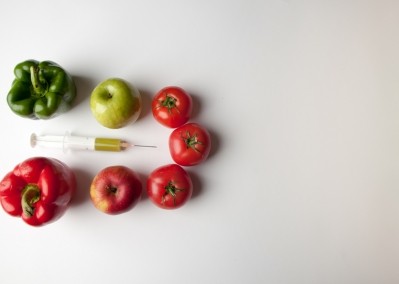EU court says crops obtained by mutagenesis are GMOs

“It follows that those organisms come, in principle, within the scope of the GMO Directive and are subject to the obligations laid down by that directive.”
Today's ruling comes somewhat as a surprise - it had been widely expected to follow the same line taken by the Advocate General of the ECJ.
Advocate General, Michal Bobek, in an opinion released in January, stated that organisms obtained by mutagenesis are, in principle, exempted from the obligations in the GMO Directive. The EU top court’s final judgements normally reflect the AG opinions. However, that trend has not been borne out today.
The EU Court did recognize, however, that the GMO Directive should not apply to crops obtained by means of certain mutagenesis techniques, namely those which have conventionally been used in a number of applications and have a long safety record.
Whether the GMO Directive may also be applicable to plants obtained by mutagenesis techniques that have emerged since the adoption of that Directive, the ECJ argued that the risks linked to the use of these new mutagenesis techniques might prove to be similar to those that result from the production and release of a GMO through transgenesis.
Background
France had asked the ECJ to rule on the status of certain genetic engineering techniques back in 2016, after a group of farmers and environmental organizations called for crops created by these techniques to be considered as GMOs and legislated accordingly.
Those organizations had argued that if not categorized as GM, there would be few safeguards in place to control the use of such plants or monitor any impact their release into the environment may have.
However, proponents of NPBTs claimed that plants obtained through these methods could also be the product of conventional cross-breeding techniques that imitate natural processes and, thus, could not be considered genetically modified organisms (GMOs).
Reaction [so far]
Dr Wendy Harwood, a senior scientist engaged in crop transformation research in the UK at the Norwich-based plant science facility, John Innes Centre, told FeedNavigator:
“The European Court of Justice opinion that organisms obtained by mutagenesis are GMOs and therefore subject to the obligations of the GMO directive is a disappointing setback for the use of valuable new technologies in crop improvement.
“Older mutagenesis techniques that have a long safety record are exempt from this obligation. The same outcomes can be achieved using newer, faster and more precise mutagenesis methods as using the older techniques. Treating the plants derived in different ways is not a logical approach based on the scientific evidence. This decision could have major negative impacts on our ability to respond rapidly to the challenges of providing sufficient, nutritious food under increasingly challenging conditions.”
However, activists welcomed the ECJ decision, saying it tallied with the position on NPBTs taken by environmental campaigners.
Head of GM Freeze, Liz O'Neill, said the case had been portrayed by industry as an argument about definition but she said the court has seen sense and “made it clear that what actually matters is how we regulate emerging technologies that have the potential to permanently alter the ecosystem.”
“The genome is a far more complex system than we used to believe… All genetic engineering techniques give rise to both unexpected changes and unpredictable real-world impacts. We are delighted that this ruling will ensure their use in our fields and our food will be subject to detailed safety checks, monitoring and traceability," she added.
Agribusiness campaigner, Corporate Europe Observatory (CEO), Nina Holland, also weighed in:
“This is a big victory for the environment, farmers and consumers. It clarifies that EU decision makers have to ensure that products from these new techniques are assessed for potential food safety and environmental risks, and that they are properly labelled as GMOs.
“Big agribusiness corporations will continue their lobbying in Brussels to escape EU safety rules for the new GMOs, but today's ruling leaves no doubt: Products from gene editing are covered by the existing EU GMO rules.”
Mute Schimpf, food and farming campaigner, Friends of the Earth Europe, was jubilant: "These new 'GMO 2.0' genetic engineering techniques must be fully tested before they are let out in the countryside and into our food. We welcome this landmark ruling which defeats the biotech industry's latest attempt to push unwanted genetically-modified products onto our fields and plates."
Jan Plagge, IFOAM EU president, said: “The confirmation by the European Court of Justice that new GMOs will be subject to traceability and labelling is good news for organic breeders, farmers and processors but also for all European producers and consumers as it brings clarity and will ensure the freedom to avoid such GM products and the protection of the environment from the potential risks of these new technologies.”
“The European Commission cannot delay action anymore and now has to ensure that the EU legal framework is properly enforced by Member States. The Commission should immediately launch a research project to develop detection methods that will complement the traceability system, to ensure an adequate segregation of these new GM plants and to prevent the contamination of organic and conventional GMO-free food and feed production in Europe," added Eric Gall, policy manager, IFOAM EU.
















